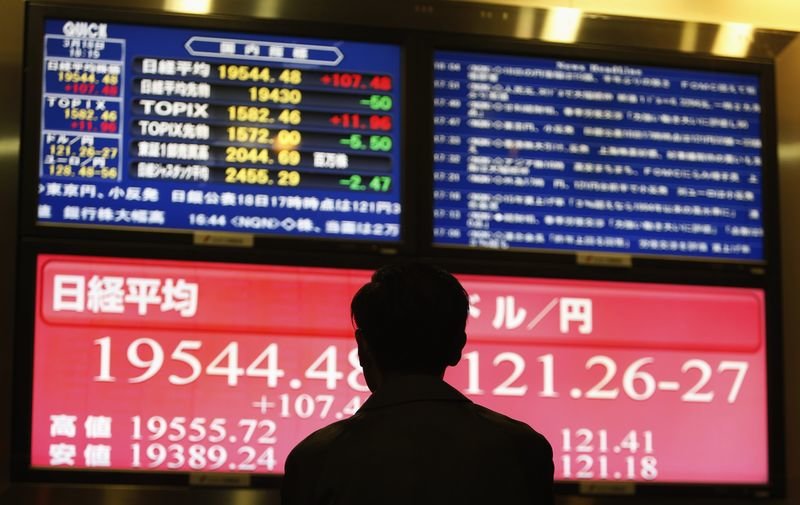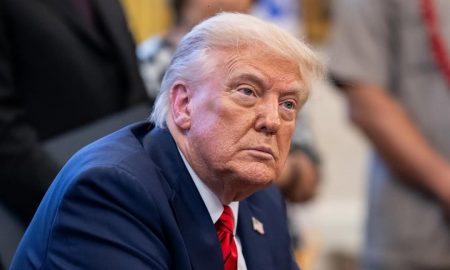
Asia Market Tumbles as U.S. Releases List of Potential Goods Subject to Tariffs

Asia Market Closes Lower
The release of the list highlighting $200 billion worth of Chinese goods on which the U.S. intends to impose tariffs, caused the Asian market to close sharply lower on Wednesday. In a statement from Robert Lighthizer, the U.S. Trade Representative, the Chinese goods on the list would be subjected to 10% trade tariffs.
Media outlets report indicate that the China markets got the worst hit following the release of the list as its Shanghai Composite fell with 1.78% and closed at 2,777.20. Prior to this, reports showed that the index closed higher for the third week in a roll on Tuesday, after a period when different factors made it fall with about 20% from a recent high that sent it into the bear market. Shenzhen composite, on the other hand, fell with 1.96% at the close of trading hours and the Chinext index, similar to the Nasdaq, tumbled 2.04%. CSI 300 index also plunged 1.74%.

Shenzhen composite, on the other hand, fell with 1.96% at the close of trading hours and the Chinext index, similar to the Nasdaq, tumbled 2.04%
For the Japan stock market, Nikkei 225 plummeted by 1.19percent and closed at 21,932.21. It also recorded a glaring drop in its trade-sensitive stocks, including automakers. For instance, Honda Motor fell by 1.04% while Nissan dropped with 2.06%. Other sectors also traded lower and recorded losses mid-day. For Hong Kong, Hang Seng Index dropped 1.76% as at 3.21 pm. JK/SIN and subsequently moderated after it earlier fell with over 2%. More losses were recorded in the materials sector and the other sectors of the Index also traded lower during the same period.
Other Major Markets Affected
The list also had an effect on other indexes as several major indexes tumbled. Sources also reported that the Kospi went down by 0.59% and South Korean exporters experienced a drastic fall in the presence of wide declines. Hyundai motor fell by 1.62% and the tech giant, Samsung Electronics fell by 0.65%. In Australia, the S&P/ASX fell by 0.68%. Reports showed that the materials, utilities and energy sectors recorded the most substantial declines. In the MSCI’s index, shares outside of Japan fell with 1.08% in Asia morning trade in the existence of the sharp sentimental turn on Wednesday.
The U.S. stock index futures were also reportedly affected by the turn of events. The Dow Jones Industrial Average futures implied open was almost at 150 points lower as at 12:13 a.m. ET. The S&P 500 and the Nasdaq also recorded lower implied openings. The report for Tuesday showed that the Dow increased with 0.58% or 143.07 points and it closed at 24,919.6 which made it the index’s fourth gains in a row. The S&P 500 rose by 0.35% to 2,793.84, while the Nasdaq composite rose higher by 0.04% and closed at 7,759.20. Sources claimed that the current issue came at a time when there was a rolling around of corporate earnings in Wall Street. Analysts reportedly stated that they were, in fact, expecting the second quarter gains for S&P 500 to have edged higher with about 20%.

The Dow Jones Industrial Average futures implied open was almost at 150 points lower as at 12:13 a.m and the S&P 500 and Nasdaq also recorded lower implied openings
Effects of Trade Tariffs
Addressing a media outlet, Erik Norland, a senior economist at CME Group stated that the problem at the moment was primarily that no one knew what could happen next. Norland added that whatever would happen could affect business investment, employment creation and all these would adversely affect the confidence of the sectors just like had been done to the financial market.
The turn of events on the stocks market came shortly after the U.S. tariffs on $34 billion worth of Chinese goods went into effect on Friday. China retaliated against this move and this caused Trump to announce that more Chinese goods worth $500 billion were at the risks of being subjected to more tariffs.
According to Manishi Raychaudhuri, an Asia Pacific equity strategist at BNP Paribas, risks had increased because the risks had converged. According to him, the slowdown in China, the increasing trade disputes and the constant hike of US rates had caused strategists to become less constructive and positive than they initially were.
Analysts have projected that the economic growth in both China and the US would be adversely affected if Trump goes ahead to impose tariffs on $200billion worth of Chinese goods in addition to the reciprocal tariffs already in place. Specifically, Louis Kuijs, the head of Asia Economics at Oxford Economics, projects that about 0.25percentage points would be shed off the growth rate of China in 2019 although he added that the US would experience a slightly lower hit.
More in Business
-
`
Intel Invests in Nvidia, but Ratings Remain Unchanged
Intel’s stock jumped more than 30% after news broke that Nvidia poured $5 billion into the company. The rally sparked renewed...
October 5, 2025 -
`
Homeownership vs. Real Estate Investment: What’s Better?
Homeownership has long been seen as the American dream. But today, more people are asking: Is it really the smartest way...
October 3, 2025 -
`
Why the Armani Fashion Empire Is Set for an IPO
Giorgio Armani, one of the most iconic names in global fashion, left behind a detailed plan for the future of his...
September 27, 2025 -
`
Why Do Pokémon Cards Outperform the S&P 500 As an Investment?
Pokémon cards have outperformed the stock market by a mile. Since 2004, they have delivered a staggering 3,821% return, according to...
September 27, 2025 -
`
America’s Billionaires Get Older—Millennials Wait for Wealth Transfer
Many of today’s billionaires don’t match the youthful tech-founder image often portrayed. While names like Elon Musk, Sam Altman, and Mark...
September 21, 2025 -
`
Can President Trump Legally Fire Fed Governor Lisa Cook?
Lisa Cook is right in the middle of one of the most explosive legal battles in Washington. President Trump wants her...
September 20, 2025 -
`
Jeff Bezos’ Advice for Millennials Who Want Financial Success
Millennials today have grown up in a world where instant access to products and services is the norm. From two-day deliveries...
September 13, 2025 -
`
Maison Margiela’s First-Ever Celebrity Campaign Stars Miley Cyrus
Miley Cyrus just changed the rules again. In August 2025, she became the first celebrity ambassador in Maison Margiela’s 37-year history....
September 12, 2025 -
`
Should You Rely on AI for Financial Advice? Here’s What Financial Experts Say
AI is everywhere right now, and yes, that includes your wallet. From budgeting to retirement planning, tools like ChatGPT, Google Gemini,...
September 6, 2025















You must be logged in to post a comment Login